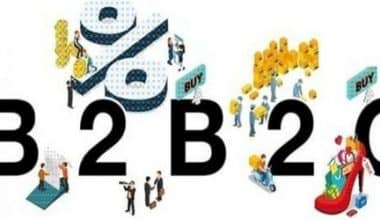Online marketplaces have become an increasingly popular option for young entrepreneurs to create a source of income, but choosing the right platform from the multiple websites to sell stuff on can be a bit challenging for some.
Do you have trendy stuff you would like to sell? Do you have a connection for wholesale deals and are looking for the best websites to sell the stuff? This article will give some guidelines on finding the best website for you.
What is the Best Free Selling Website?
There are several free websites to sell stuff on available online, each with its own unique features and advantages. The best websites for you to sell stuff on will depend on your specific needs and the products or services you are looking to sell. Here are some of the top free selling websites:
#1. Facebook Marketplace
With over 2.8 billion monthly active users, Facebook Marketplace is one of the largest and most popular free selling websites. It is easy to use and allows you to sell anything from furniture and electronics to clothing and accessories.
#2. Craigslist
This is a popular free selling website, with a wide range of categories for buying and selling goods and services. The website is basic and easy to use with its downside being that it has been known to attract scams and fraudulent activities.
#3. eBay
While eBay does charge fees for some of its services, it also offers a free selling option for individuals looking to sell items on the platform. It is one of the largest online marketplaces, with a wide range of products and a large customer base.
#4. Letgo
Letgo is a free app that allows you to buy and sell items locally. It is designed to be user-friendly and easy to use, with a simple interface and a wide range of categories. The best free selling website for you will depend on your specific needs and preferences.
Do your research and evaluate each option carefully to determine which one is the best fit for you.
How Can I Sell My Small Stuff Online?
Selling small stuff online has become easier than ever before. Here are a few steps you can take to start selling your small stuff online:
Choose a platform: There are many online marketplaces like Amazon, Etsy, eBay, and Facebook Marketplace where you can sell your small stuff. Choose a platform that suits your product and target audience.
- Create a seller account: Sign up for a seller account on the platform you have chosen. Provide all the necessary details like your name, email, address, and payment information.
- List your products: Take clear photos of your products and write detailed descriptions that accurately represent your items. Use keywords to help potential buyers find your products.
- Set your price: Research the prices of similar products on the platform and set a price that is competitive.
- Manage your inventory: Keep track of your inventory and make sure you have enough stock to fulfill orders.
- Ship your products: Decide on a shipping method and make sure to include the shipping cost in the price of the product.
- Promote your products: Share your products on social media platforms and use relevant hashtags to increase visibility.
- Provide excellent customer service: Respond to customer queries and feedback promptly and professionally.
By following these steps, you can start selling your small stuff online and grow your business over time.
What is the Most Popular Selling App?
The most popular selling app varies by country and region. However, some of the most widely used and popular selling apps globally include:
- Amazon
- eBay
- Alibaba
- Shopify
- Etsy
- Walmart
- Wish
- AliExpress
- Mercari
- Poshmark
These platforms have millions of active users and have facilitated billions of dollars in transactions worldwide.
What is the Easiest Platform to Sell Online?
The easiest platform to sell online depends on your specific needs and the type of products you want to sell. Here are a few popular options with different features and benefits:
#1. Facebook Marketplace
If you already have a Facebook account, this is a simple and easy way to list items for sale. The platform makes it easy to connect with potential buyers in your local area, and complete transactions.
#2. Etsy
If you sell handmade or vintage items, Etsy is an easy-to-use platform with built-in tools for managing your shop, listing products, and processing orders.
#3. eBay
eBay is the most popular platform for selling products. It’s easy to set up an account and start listing items for sale, and eBay offers various seller tools and features to help you manage your listings and sales.
#4. Shopify
Shopify is a user-friendly e-commerce platform that allows you to set up a professional-looking online store without any technical skills. It offers various tools and integrations to help you manage your inventory, orders, and shipping.
#5. Amazon
Amazon is a massive marketplace that can be an easy platform to sell on if you’re already familiar with the site. It’s simple to create an account, list your products, and start selling to a large audience. However, the fees can be higher compared to other platforms.
#6. Poshmark
Poshmark is the best e-commerce site for selling designer items. it is a popular hub for selling fashion items; women’s clothes, shoes, etc. It is easy to create a seller’s account and it’s free to use. Read my article on how to sell on Poshmark.
What are the Best Websites to Sell Stuff on as a Small Business?
As a small business, there are several websites you can consider to sell your products online. The best website to sell stuff for you will depend on several factors, including the type of products you sell, your target audience, and your budget.
Here are some popular websites to sell stuff on that you can consider:
#1. SquareSpace
Squarespace is a top e-commerce website builder for small businesses with user-friendly tools and templates for creating an online store, even with minimal technical experience. Although many Squarespace users sell services, product-based businesses can still use the platform to their advantage.
#2. BigCommerce
Big Commerce is a comprehensive e-commerce platform that offers an abundance of features and functionality, making it suitable for established businesses.
Its complexity may prove overwhelming for smaller businesses, but those with growth plans and technical resources could benefit from its capabilities. Big Commerce offers features for SEO, international commerce, and multichannel selling on social media and third-party marketplaces.
#3. WooCommerce
WooCommerce is an adaptable e-commerce solution that offers a high degree of customization, particularly for those with technical expertise in website design and coding. With more than 6,000 third-party integrations, it provides ample options for expanding store functionality.
As a free business platform, WooCommerce offers budget-friendly flexibility for businesses of any size.
#4. Wix
Wix offers a website builder with intuitive usability and specific e-commerce features for those seeking an all-in-one solution.
Paid plans include e-commerce capabilities like order tracking, online payments, multi-channel selling, and abandoned cart campaigns. With more than 500 storefront templates available, Wix provides ample design options to customize your e-commerce experience.
#5. Weebly
Weebly’s e-commerce platform is ideal for small businesses with uncomplicated online storefronts and limited product catalogs.
It offers filtered product search, mobile checkout optimization, order management, processing, and shipping flexibility. While Weebly may lack advanced features, it remains a user-friendly platform suitable for starting any new business.
Also read How To Sell Stuff Online: Best Platforms to Sell Stuffs & Make Money for Free
Can I Make a Website to Sell Stuff for Free?
Yes, it is possible to create a website to sell things for free, although it may require some time and effort on your part to set it up.
There are several website builders that offer free plans, such as Wix, WordPress.com, and Weebly, that you can use to create your online store.
Keep in mind that while these platforms may offer free plans, they often come with limitations such as a limited number of products, limited storage space, and ads on your website. Additionally, if you want to accept payments on your website, you may need to pay for a payment processing service such as PayPal or Stripe.
Alternatively, you can also use online marketplaces such as Etsy, eBay, or Amazon to sell your products without the need to create your own website. These platforms do charge fees and commissions on sales, but they also provide a ready-made audience and support for your online store.
How to Make Your E-Commerce Website
Setting up an e-commerce website can be challenging, but it’s also an exciting opportunity to create a successful online business. Here is a guide to help you get started:
#1. Determine Your Niche and Target Market
Before you start building your website, you need to know what you’ll be selling and who you’ll be selling it to. Do some research on what products are in demand in your niche and who your target audience is.
#2. Choose a Domain Name
Your domain name should be easy to remember and reflect your brand. Make sure it’s not already taken and choose a reputable domain registrar.
#3. Choose an E-Commerce Platform
There are many e-commerce platforms available, such as Shopify, WooCommerce, and Magento. Choose one that fits your budget and offers the features you need, such as a shopping cart, payment gateway, and inventory management.
#4. Set Up Your Website
Once you’ve chosen your platform, it’s time to set up your website. Choose a theme that reflects your brand and customize it to fit your needs. Make sure your website is mobile-friendly and easy to navigate.
#5. Add Your Products
This is where you’ll upload all your product information, including descriptions, prices, and images. Make sure your products are organized into categories and easily searchable.
#6. Set Up Payment Gateways
You’ll need to set up payment gateways, such as PayPal or Stripe, to accept payments from customers. Make sure you choose a secure payment gateway and provide customers with multiple payment options.
#7. Determine Shipping Rates and Taxes
Determine your shipping rates and policies and set up your tax rates. Make sure your customers are aware of your shipping and tax policies before they make a purchase.
#8. Test Your Website
Before launching your website, test it thoroughly to make sure everything works as expected. Test the shopping cart, payment gateway, and any other features you’ve added.
#9. Launch Your Website
Once you’re satisfied with your website, it’s time to launch it. Make sure you promote your website through social media, email marketing, and other channels to attract customers.
#10. Monitor and Optimize Your Website
Monitor your website regularly to ensure everything is working properly. Use analytics tools to track your website’s performance and optimize it to improve your conversion rates and customer satisfaction.
Following these steps, you can set up an e-commerce website that is not only functional but also visually appealing and user-friendly.
Where Can I Market for Free?
- Craiglist
- Yelp
- Nextdoor
- Swap.com
Related Articles
- Best Buying Websites You Should Bookmark In 2023
- HOW TO START AN ETSY BUSINESS
- TOP 17+ THINGS TO SELL TO MAKE MONEY FAST IN 2023
- 51+ ETSY SHOP IDEAS To Consider In 2023
References
- Orbelo.com
- Nerdwallet.com
- Shopify






